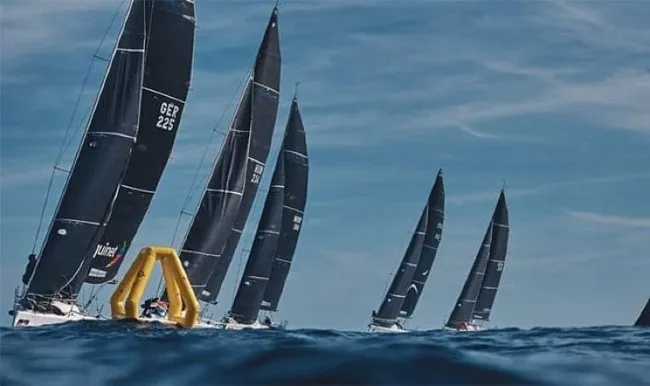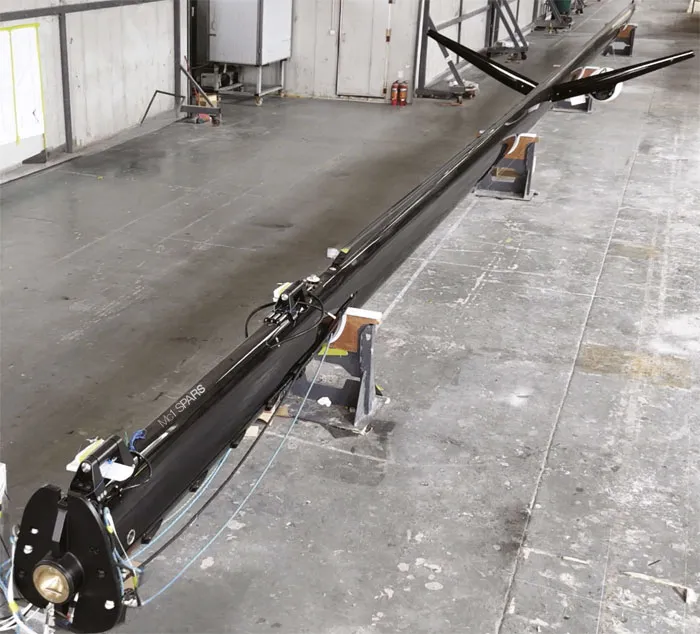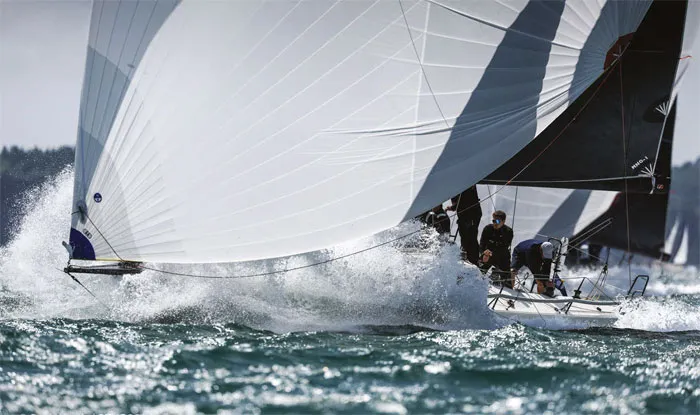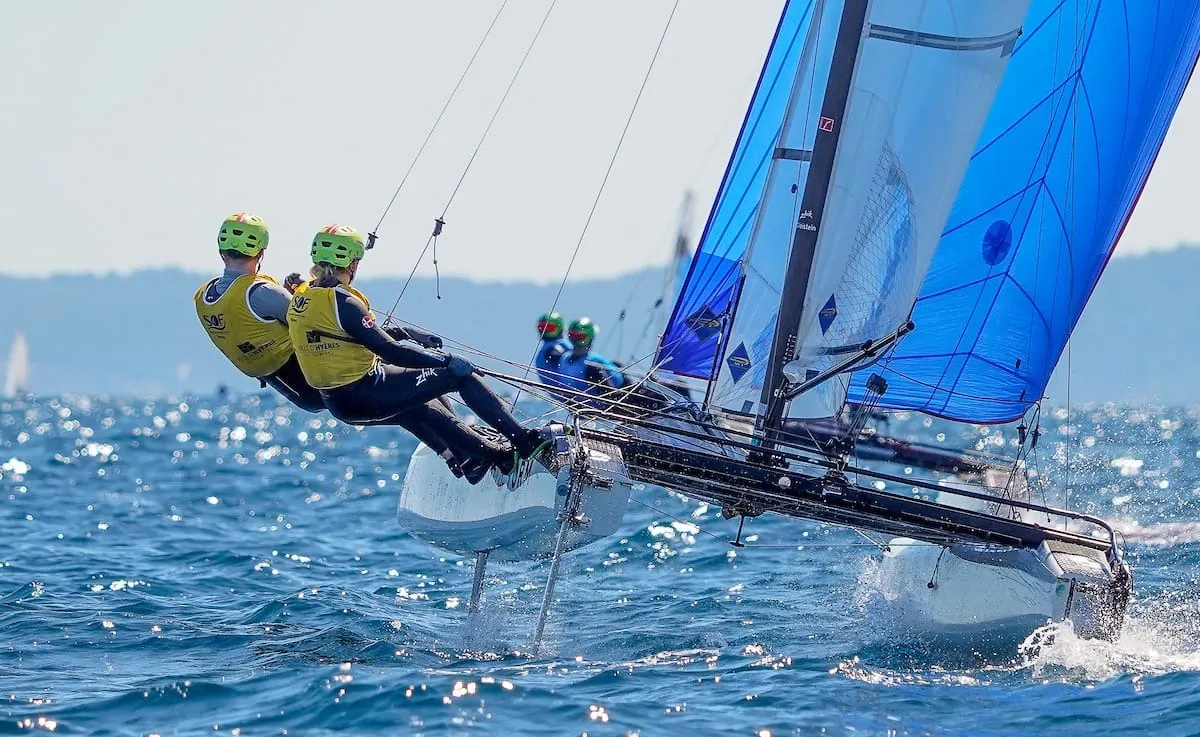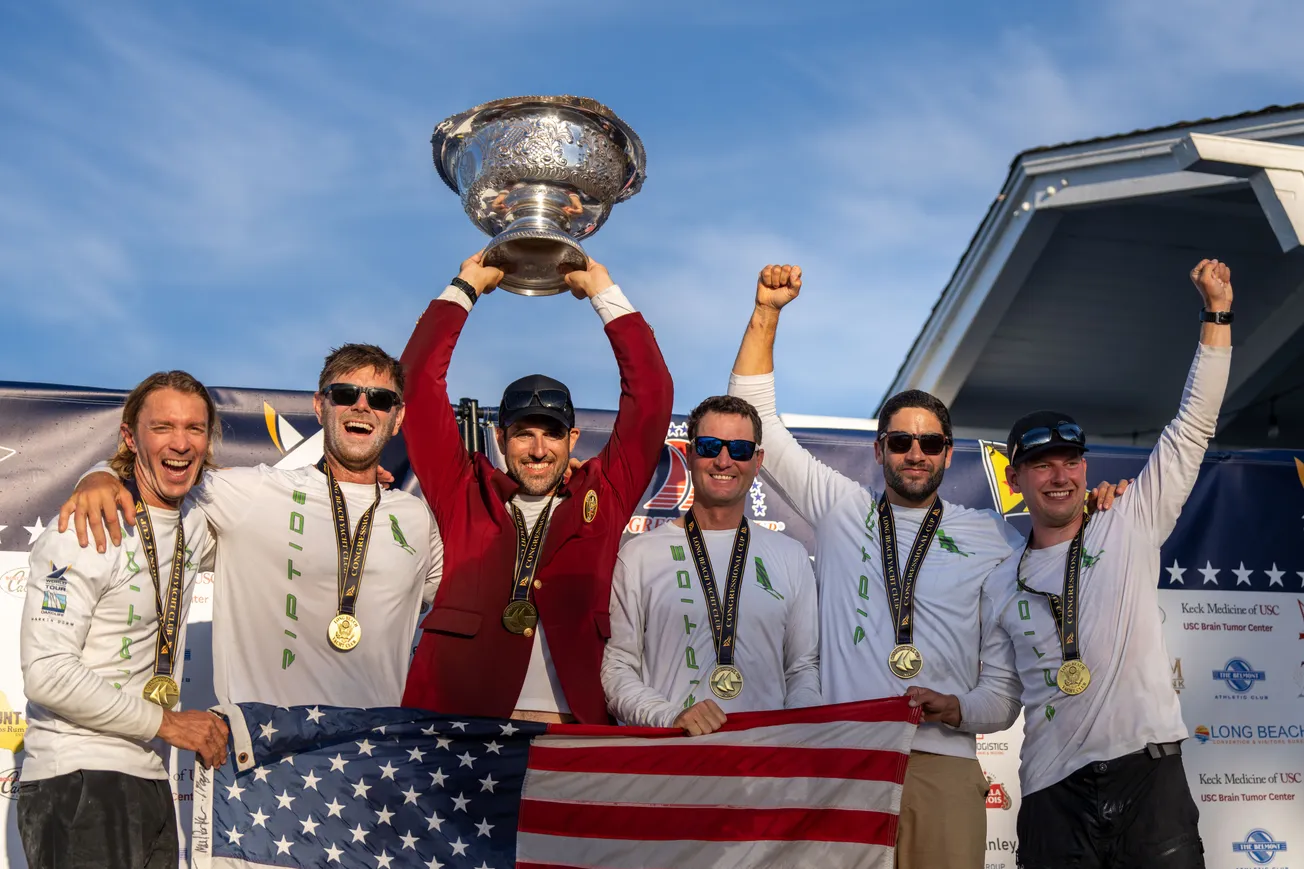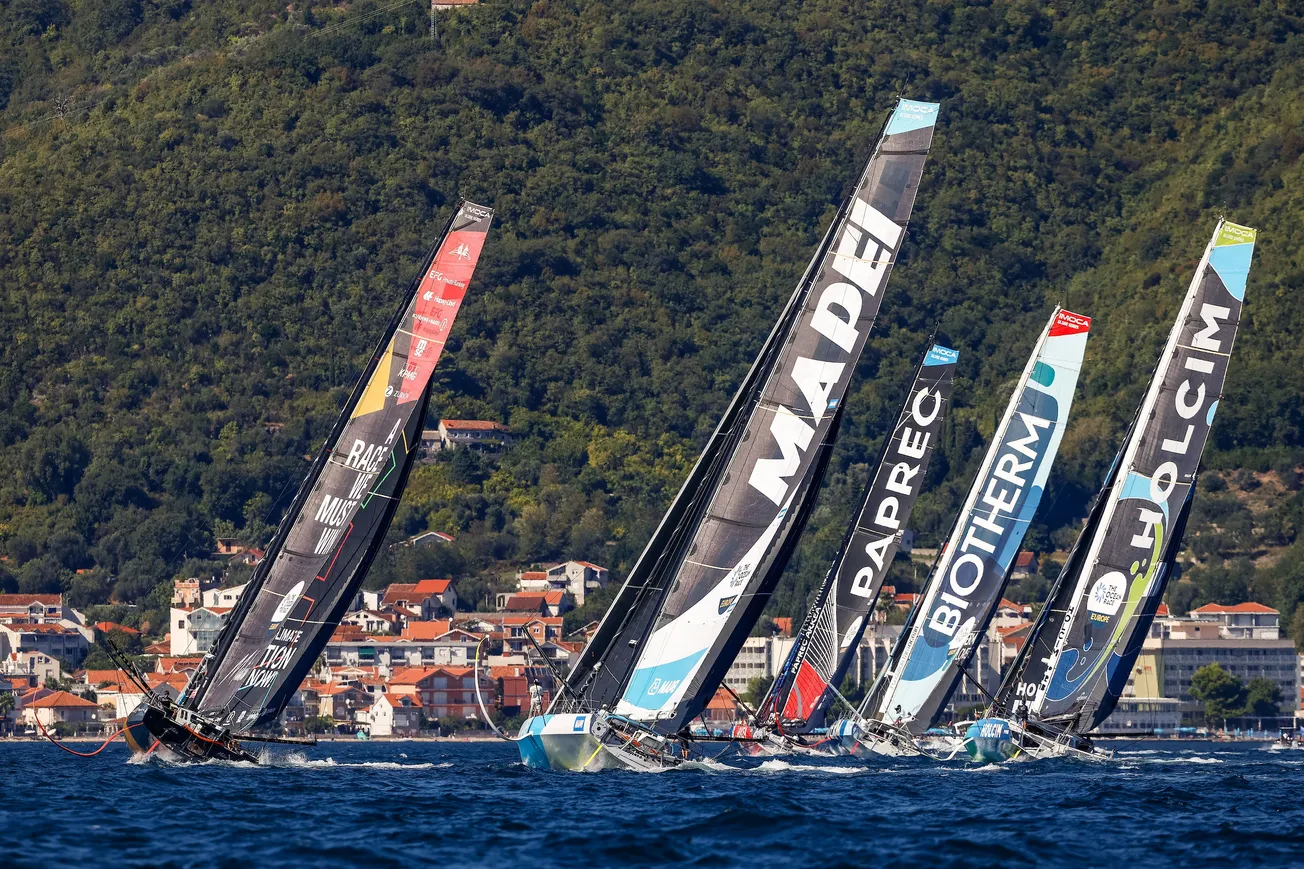
While watching the Paris 2024 Olympic regatta you may have noticed that, despite big variations in wind strength and direction, start lines and mark positions were always bang on.
The reason for that is GiPSY Buoy. These are marks fitted with GPS, wind sensors and thrusters. Their position is remotely controlled by the race committee to set fair starts and true courses.
GiPSY Buoy is the brainchild of Valentina Venturi. In 2016 she had driven from the Swiss lakes to the coast for a regatta with her J/70 crew and they were a bit fed up. ‘We were waiting for the buoys to be reset again after yet another windshift. I thought it was a pity that we got just a few races per day because buoys needed resetting. Then I thought “there are drones taking videos of us. Why don’t we have remote-controlled marks?”’
Most of us would just have sighed and stretched out on the foredeck for a snooze. Not Valentina. ‘I was a mechanical engineer finishing my PhD at CERN at the time. I spoke with the race committee and they thought it was a great idea because back then there were no robotic marks.’
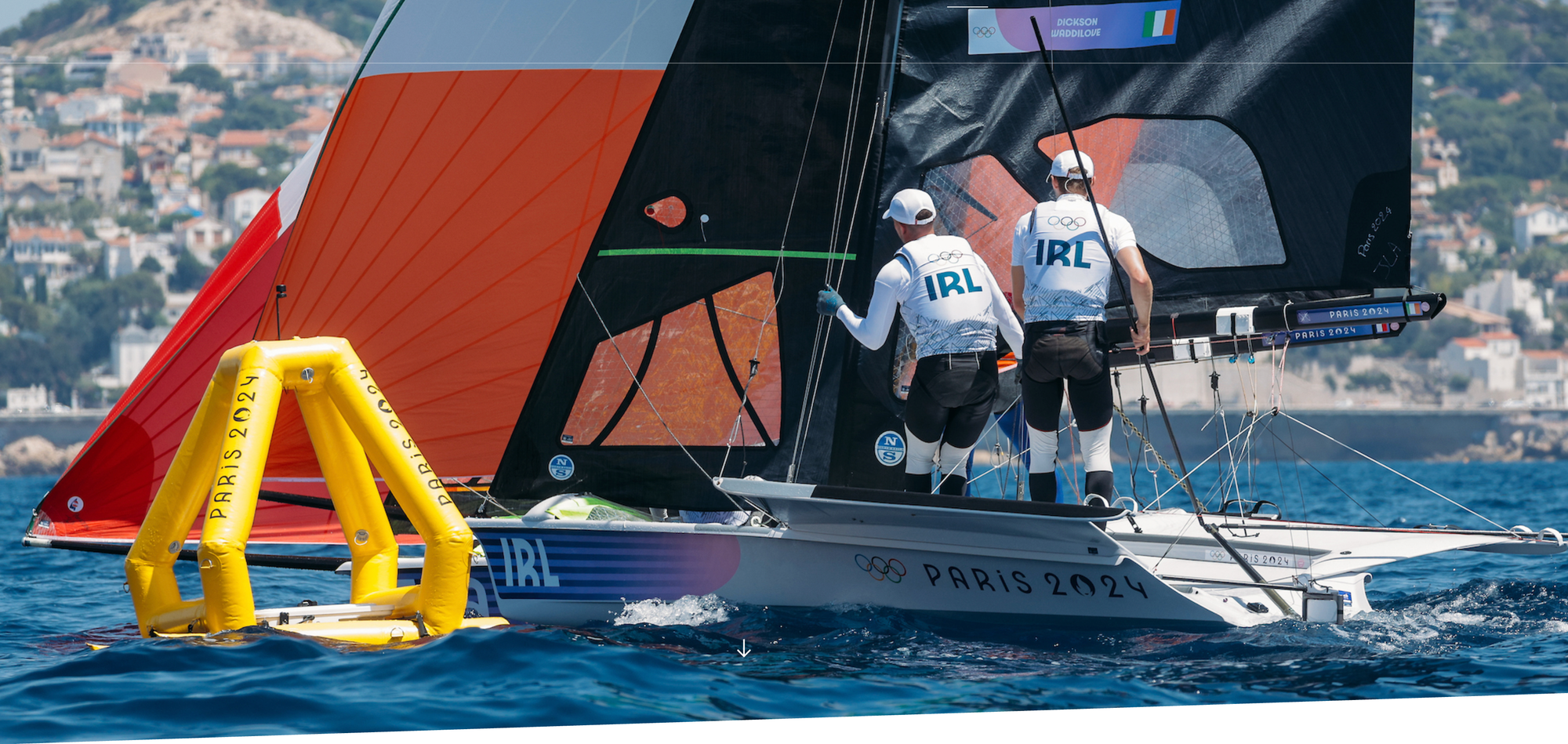
Efficiency aside, there was another reason why a decent robotic buoy had a ready market, as Valentina points out. ‘Many clubs in Italy and the South of France are seeing new laws prohibiting anchoring and they get government help to find a solution.
‘For a few years I tried trolling motors but they were too heavy, I needed something easier to use. Then I got a call about someone building a lighter drone platform for the water, so I decided to meet him. I already had my inflatable top, something I designed for low drag to avoid having a huge battery and motor. I attached the inflatable to the platform and it worked.
‘I was interviewed by an Italian magazine and they put an article online and we received some interest from clubs and classes. We worked with them for a year or two. At some point I realised my vision was very different to that of my co-founders so I stepped out.’
In 2021 a businessman and sailor, Mauro Bettazza, offered to help finance her vision and GiPSY Buoy was born. ‘We kept the idea of using two small thrusters but that’s all. It was obvious to me that the app and buoy should communicate with each other via GSM because it works long range. I hired Sandro Mani to build the communication software and we used open-source drone software for positioning.
‘Seawater was too aggressive for all the commercial push-button solutions I tried, so we made our own injection moulded casings, buttons, silicone keypads. The big investment we put in has driven a very robust solution.’
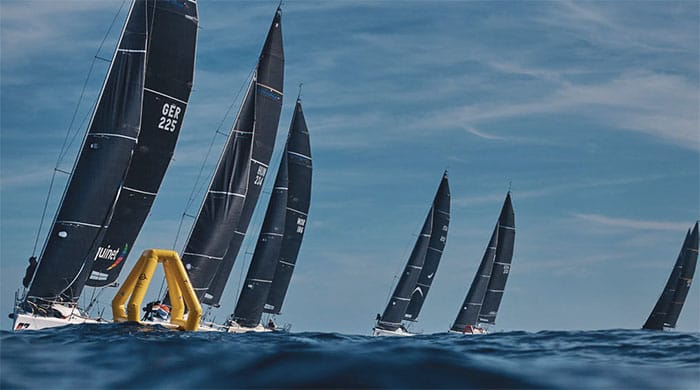
GiPSY Buoy made its competitive debut in March 2022. ‘I had a conversation with a French sailor who told the French Sailing Federation about the buoys. I was then invited to bring the buoys to Pôle France Voile in Marseille and they liked them. They asked me to modify some parts, so I did, and they bought 15 buoys and used them in the Semaine Olympique d’Hyères.
‘A year later the Olympic committee asked all companies to submit a sole supplier application and they chose our buoys.’
What swung the decision? ‘People who have used two or three brands say GiPSY Buoy is the only one you can put in a RIB because it’s smaller (1.4m x 1.25m) and lighter (25kg). That means you can go at 20 knots to place the buoy instead of towing them at slower speeds. Other features are the GSM control and the possibility of using push buttons if the connection is lost.’
Venturi has just launched a new product: GiPSY-mini. It’s a simplified version designed for training. With anchoring banned, coaches on crowded lakes have resorted to drift buoys with predictably unsatisfactory results. ‘It’s a smaller (1.2 x 0.4m) 11kg buoy, easy to transport in a RIB, easy to set, just put it in the water, push a button and it stays there. We now have some requests for a fully remote-controlled version for Optimist and rowing regattas, but it’s also relevant to port authorities, hydrographic research, even on-water drone lightshows.’
It’s a far cry from the boundaryshifting science of CERN. Does she miss that? ‘It finished after the PhD, it was amazing but now, despite the hard work I’m very happy to have combined my passion with my job.’
Get all areas access to Yacht Racing Life with a Full Membership free 30-day trial. There's no obligation and you can cancel at anytime.


